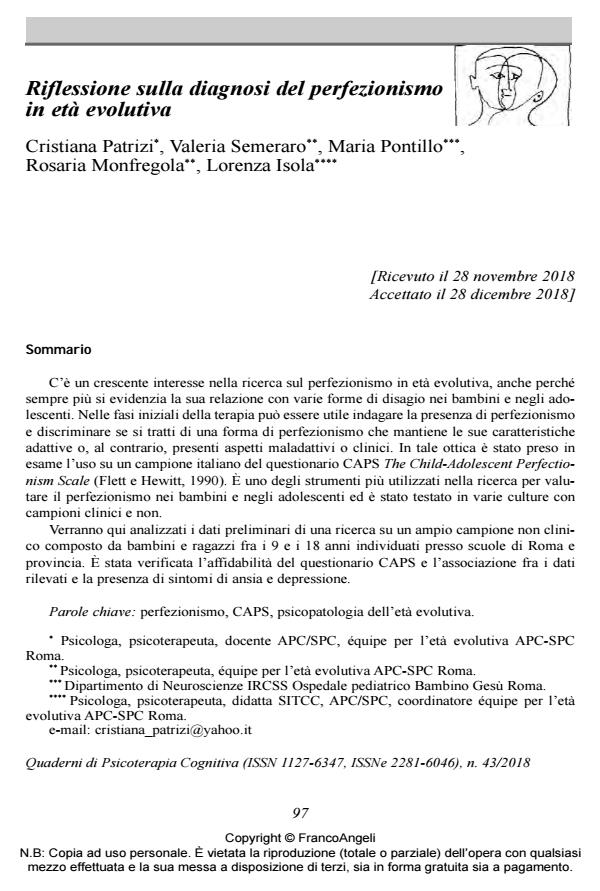Reflection on the perfectionism diagnosis in the developmental age
Journal title QUADERNI DI PSICOTERAPIA COGNITIVA
Author/s Cristiana Patrizi, Valeria Semeraro, Maria Pontillo, Rosaria Monfregola, Lorenza Isola
Publishing Year 2019 Issue 2018/43
Language Italian Pages 19 P. 97-115 File size 107 KB
DOI 10.3280/QPC2018-043006
DOI is like a bar code for intellectual property: to have more infomation
click here
Below, you can see the article first page
If you want to buy this article in PDF format, you can do it, following the instructions to buy download credits

FrancoAngeli is member of Publishers International Linking Association, Inc (PILA), a not-for-profit association which run the CrossRef service enabling links to and from online scholarly content.
There is a growing interest in the research on perfectionism in the developmental age, also because its relationship with various forms of discomfort is more and more highlighted in children and adolescents. During the initial stages of therapy, it can be useful to investigate the presence of perfectionism and to discriminate if it is a form of perfectionism that maintains its adaptive characteristics or, on the contrary, it is a clinical or maladaptive perfectionism. With this in mind, the use on an Italian sample of the CAPS questionnaire "The Child-Adolescent Perfectionism Scale" (Flett e Hewitt, 1990) was examined. CAPS is one of the most used tools in research to evaluate perfectionism in children and adolescents and has been tested in various cultures with both clinical and non-clinical samples. The preliminary data of a research on a large non-clinical sample composed of children and adolescent aged between 9 and 18 will be analyzed here; this sample has been identified in schools in the area of Rome and its province. The reliability of the CAPS instrument and the association between observed data and symptoms of anxiety and depression has been verified.
Keywords: Perfectionism, CAPS, developmental psychopathology.
Cristiana Patrizi, Valeria Semeraro, Maria Pontillo, Rosaria Monfregola, Lorenza Isola, Riflessione sulla diagnosi del perfezionismo in età evolutiva in "QUADERNI DI PSICOTERAPIA COGNITIVA" 43/2018, pp 97-115, DOI: 10.3280/QPC2018-043006